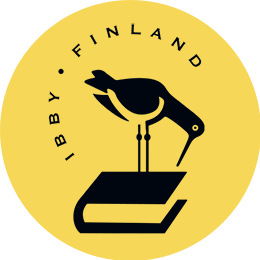When representation is not enough

Written by: Warda Ahmed
Translated from Finnish into English by Anastasia Linnala
Children’s literature had been close to my heart long before I had my own children. The stories of my childhood and the magic of my books have followed me for many years. Children’s books are also a great reflect on the discussions goin on in the surrounding society. For two years, I have been taking part in the Drin project of Goethe Institute where I have been speaking on behalf of children’s literature.
Diversity discussions of the recent years have widened the range of different representations seen in books. Children’s books, teen books and textbooks of the year 2021 look very different from what they use to look like ten years ago, when it comes to portrayng children of colour, different families, breaking gender norms or showing different disabilities. The demand for growing diversity and inclusion cannot concentrate solely on what illustrations show.
The demand for the diversity of contents and creators of children’s literature matters just as much as representation visibility. Children’s literature is constructing children’s world view. Children’s literature needs to support all children in finding their own place in the world and in experiencing agency and their life’s importance. What framework is being built throughout a story? Who is the writer and who is the illustrator? What language are books published in? How much do they cost? Who gets financing for publishing the books? Who gets to educate themselves? All of those are key questions if one wants to influence children’s literature diversity in a deeper way.
A great example of what a diverse range of children’s literature’s creators could look like is a top list of the best illustrated books by the Canadian CBC . In those books, both in the content and the creators of the books are diverse. The themes of the books are diverse and the illustration styles clearly differ.
It is gratifying that white Finnish creators have shown an open mind by, for instance, making brown characters the central figures of their books. An example of that is a wonderful work by Salla Sillanpää where Edla explores the Secret Island of Salasaari. Edla’s skin colour is not explained in the book in any way, the girl simply plunges into adventure of the story.
There are only a few children’s writers of colour in Finland. Jani Toivola has created the book Boy and Skirt,(Poika ja Hame) related to gender norms. Johanna Lestelä has got out two books about Tuiku.
In Finland, we are still to have an honest discussion about what it would take to make children’s literature industry more diverse than it is. We need to support and create more of children’s literature in Finland’s minority languages. Children need literature in their own language, that relates to their experience. We need more books in Sámi, Romani, Russian, Estonian, Somali, Arabic etc. Representation could be repeating the same stereotypes if there is no creator diversity. Children’s literature still lacks the stories of many minorities. That is why it matters to ask again and again, who is allowed to tell whose story? Where do stories live? They live in all of us.